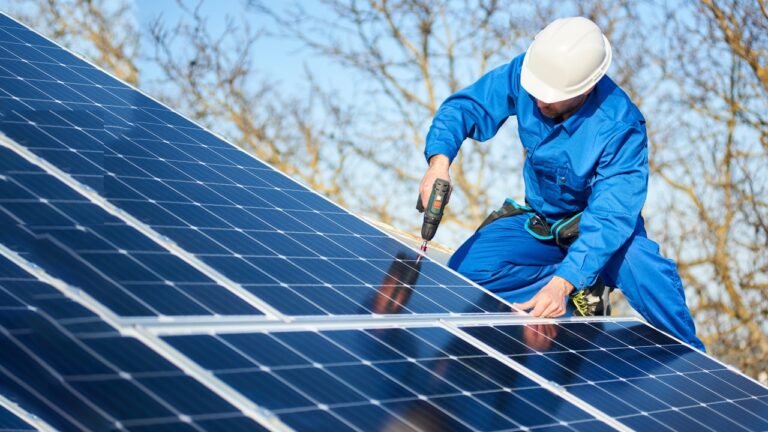Choosing to go solar is a significant investment in your home’s energy future, and the timing of your installation plays a more critical role than many realize. Homeowners often focus on equipment quality or savings projections, overlooking the fact that they begin the installation process.
Whether it’s due to changing seasons, shifting incentives, or installer availability, when you decide to hire a local solar installer, it can impact everything from installation speed to overall project cost. We will explore how timing affects various aspects of the solar installation process and why careful planning can maximize both financial returns and long-term system performance.
Understanding the Value of Proper Timing in Solar Installation
1. Seasonal Weather Conditions Affect Efficiency and Installation Windows
Solar panel installation is heavily influenced by the seasons. While solar systems are designed to perform year-round, extreme weather can delay installations and reduce output during the first few months of operation. For instance, scheduling your installation in the middle of winter may result in unexpected weather interruptions, such as heavy rain or snow, which can slow down or pause work.
On the other hand, spring and early summer often provide optimal weather for installation, with longer daylight hours, drier conditions, and moderate temperatures that make the job faster and safer for workers. If you’re considering a system in Pleasanton, working with a trusted local provider like can help you time the project just right to take full advantage of seasonal benefits.
Additionally, installing your panels just before peak sunlight months ensures your system starts operating during the most productive time of year. By syncing your installation with the solar calendar, you increase your system’s early efficiency and make the most of the initial investment period. It’s not just about when the system is turned on—it’s about how much solar energy it can capture right from the beginning.
2. Incentives and Tax Credits Have Deadlines
Government incentives and tax credits are among the biggest financial drivers for going solar, but they often come with expiration dates or step-down schedules. Timing your installation can determine whether you get the full benefit of current programs. Many federal and state-level tax credits decrease annually or may end altogether if budgets aren’t renewed.
For example, waiting too long in the year might push your project into a period where the percentage of the credit is reduced, costing you thousands of dollars. Similarly, local rebates can run out mid-year as funding dries up on a first-come, first-served basis. By acting sooner rather than later, homeowners can take full advantage of these offerings before they are no longer available.
Planning also allows for any unexpected delays in permitting or inspections without missing key incentive windows. Being proactive rather than reactive when hiring a local installer can make the difference between a significant return and a missed opportunity.
3. Installer Availability Fluctuates Throughout the Year
Like most home service providers, solar installers face busy and slow seasons. During peak times—typically late spring through early fall—demand spikes as homeowners rush to complete their installations before winter or the end of the tax year. Waiting until this rush can lead to long backlogs, delayed site visits, and extended timelines. Conversely, scheduling during the off-season (such as late winter or very early spring) often means quicker response times, better access to crew schedules, and even promotional pricing from local installers trying to maintain a steady business.
In high-demand months, installers may also have to juggle multiple jobs, which could impact the attention given to your specific project. By hiring during a quieter time, you’re more likely to receive faster service and dedicated support. Timing your hiring before peak season ensures your installation is completed efficiently and without the bottlenecks caused by overwhelming installer workloads.
4. Utility Connection and Permitting Delays Vary by Season
One of the lesser-known aspects of solar installation is the backend process, which includes permitting, inspections, and utility approval. These steps can take anywhere from a few days to several weeks, depending on your city’s workload and the utility’s processing capacity. During periods of high demand, permit offices, and utility companies may be overwhelmed with applications, resulting in bottlenecks that delay the activation of your solar system.
Hiring a solar installer well ahead of the peak period allows for more flexibility in navigating the bureaucratic aspects of the process. It also ensures that overlapping jobs don’t pressure your installer, allowing them to dedicate time to submitting paperwork and coordinating inspections. These delays are not within your installer’s control, so building a buffer by hiring earlier in the year helps avoid frustration. The goal is not just a quick installation, but a fast and seamless connection to the grid that starts saving you money as soon as possible.
Timing is often the unsung factor that determines the success and cost-effectiveness of a solar installation. From maximizing energy output during peak sunlight months to ensuring you don’t miss out on lucrative tax credits and rebates, choosing the right time to hire a local solar installer has tangible benefits. It can reduce delays, increase financial returns, and align your system with your highest energy usage patterns.
Whether it’s beating the summer rush, locking in incentives before deadlines, or navigating unpredictable permitting processes, acting early and thoughtfully gives you an edge. Solar power is not just about going green—it’s about planning smartly to make every watt and every dollar count. By being mindful of the calendar, homeowners can take control of their solar journey with greater confidence and better results.
